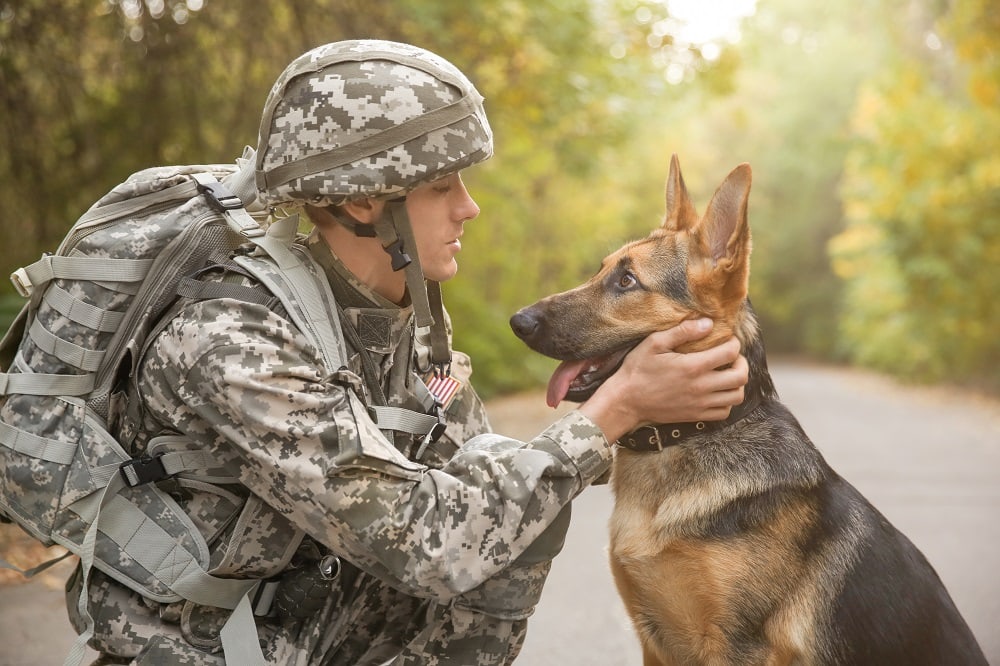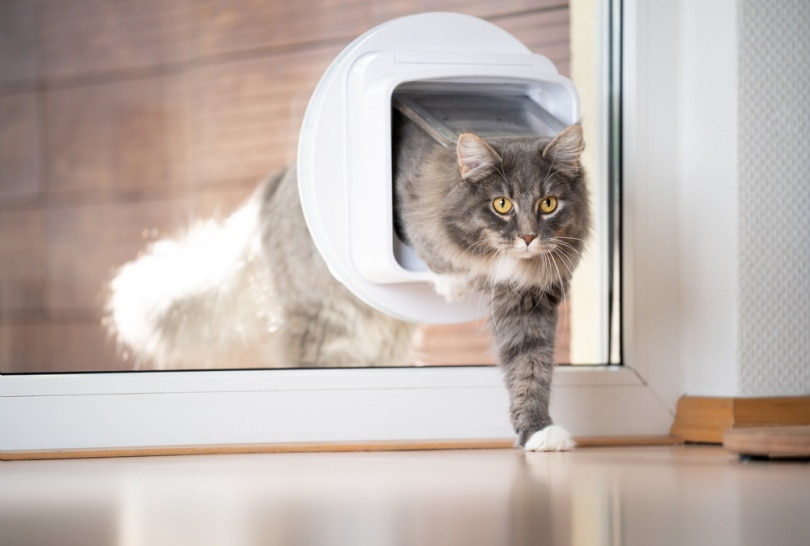
If you have a dog or cat that frequently likes to go outside, a pet door can keep you having to get up every few minutes to open the door. However, there are several things to consider before you purchase one, including safety, installation difficulty, and convenience. Keep reading as we list all of the pros and cons of these doors to help you make an informed decision.
Click Below to Jump Ahead:
The 4 Pros of Pet Doors
1. Convenience
Convenience is the main draw for pet doors. Installing one will enable your dog or cat to come and go as they please, and you won’t need to be involved at all.
2. Many Designs and Styles
Pet doors are available in a wide variety of designs and styles, so you can get something that perfectly matches your interior or exterior. Some doors will even mask the entrance to help improve security.
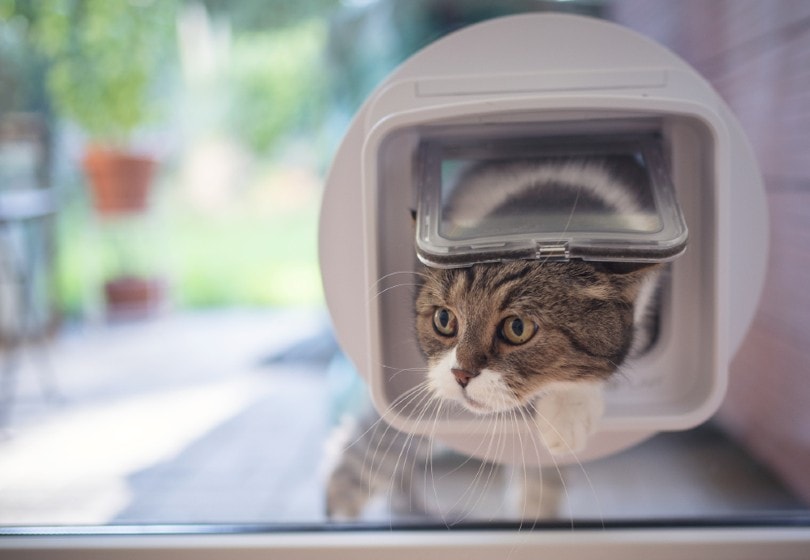
3. Multiple Features
Certain doggy doors have many interesting features. Some doors only allow traffic to flow in one direction, and others lock when you don’t need them. You can even find electronic doors that enable you to control specific features, like video, using your smartphone. Some doors even work with your pet’s microchip to prevent unwanted animals from using the door.
4. Fewer Indoor Messes
Having fewer messes in the house because the dog can always get outside when they need to use the bathroom is one of the main reasons that this type of door is so popular. Once your dog understands how to use it, you will no longer need to worry about coming home to find a mess on the floor.
The 5 Cons of Pet Doors
1. Installation
Installing a pet door requires cutting a hole in a door that is already there. You need the tools to make the hole and the ability to take accurate measurements because there is not much room for error.
2. Resale Value
If you intend to sell your home anytime soon, you will need to consider that a new owner might not need a pet door, and it might even bring down the home’s value because the only way to remove it is to replace the door.
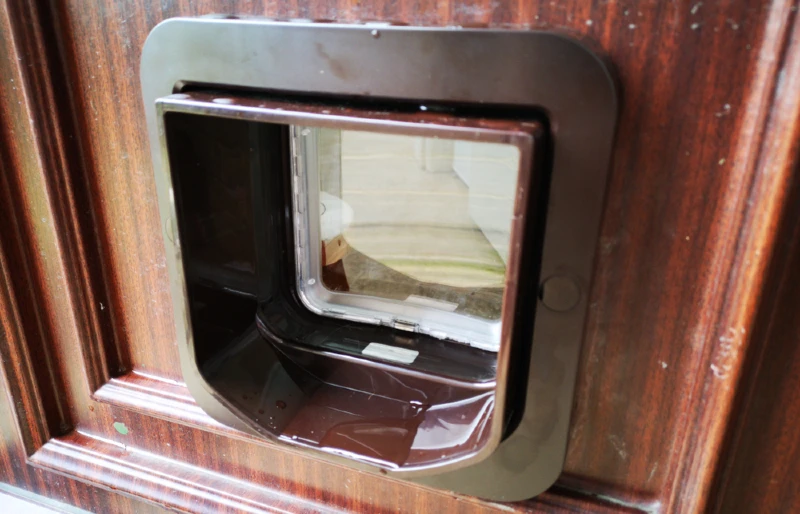
3. Drafts
Another downside to pet doors is that they can enable warm air to escape, which can lead to cold drafts and higher energy costs.
4. Intruders
Unless you have a pet door that works with a microchip or another method that identifies your pet before opening, any animal that can fit through it can potentially use it to gain access to your home. If the door is large enough, a potential burglar might also use it to get in.
5. Only Suitable for Well-Behaved Pets
Pet doors are only suitable for well-behaved pets. They are not a good idea if you have a dog or cat that likes to run off whenever you are not looking. A pet door might also be less than ideal if your dog uses it to chase after the mail deliverer or other visitors to your property.
Frequently Asked Questions (FAQs)
Can Burglars Get Through My Pet Door?
Unfortunately, if you install a pet door for a large dog, there is a good chance that a burglar can use it to access your home.
How Does the Pet Door Keep Out Insects and Rodents?
Pet doors usually have springs and weather stripping to create a tight seal around the door when your pet isn’t moving through it, which should help keep out insects and rodents.
Will a Pet Door Help House-Train My Dog?
While adding a pet door will allow your dog to relieve themselves at any time, it won’t likely do much to teach the dog that they need to go outside when the urge strikes. Instead, you’ll need to house-train the dog first, then teach them how to use the door so they can go out if they need to.
Can I Lock My Pet Door?
Yes. Most pet doors have a lock that you can use to prevent your pet or any other animal from using it. If you are concerned about intruders, many pet doors have aluminum covers over the locks that can make the door stronger and more resistant to tampering.
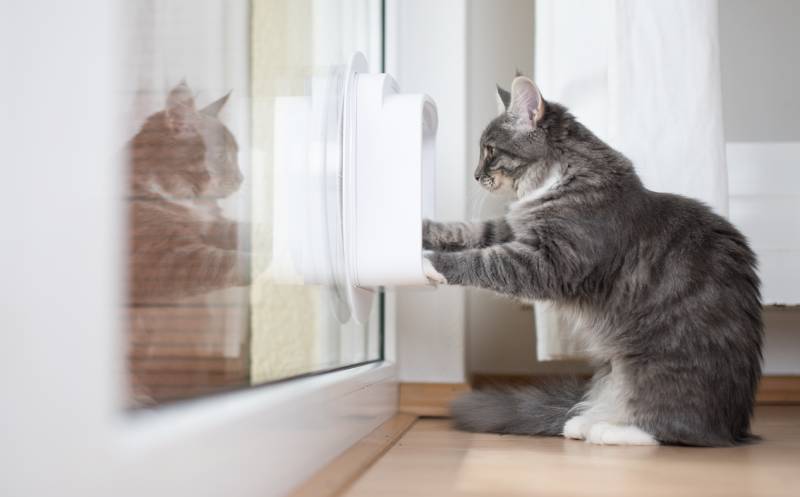
What Size Door Do I Need?
To determine the size of the pet door you need, measure the width of your pet at their widest point, and add about 2 inches for safety and comfort. Then, measure your pet’s height from the top of their shoulders to the floor, adding an inch or two to that number. The door that you purchase should match these measurements, with extra space as your pet moves through. Many doors also have a rise that you might want to consider if your pet is old or has short legs. A rise is a pane that your pet has to step over as they move through the door, which can be several inches tall.
Why Doesn’t My Dog Use the Door That I Installed?
The most likely reason your pet isn’t using their new pet door is that they aren’t sure how to use it. It can take a dog or cat several tries to get used to pushing on the door to make it open, and they might ignore it or even seem frightened of it. Training your pet to use it by sitting on the other side and calling them to go through to receive a treat can be a great way to encourage them to try it. After a few attempts, they will likely have no trouble using it.
Final Thoughts
A pet door is a convenient way to allow your dog or cat to go outside whenever they want without you having to open the door each time. Once your pet gets used to it, you will likely come home to fewer accidents because they will always be able to get outside when nature calls. Pet doors are available in many colors and sizes and have a wide range of features to suit nearly any situation. That said, there are a few downsides. They can be difficult to install and might bring down the resale value of your home. They can also lead to higher energy costs and might even make your home more vulnerable to burglars.
Featured Image Credit: Nils Jacobi, Shutterstock







